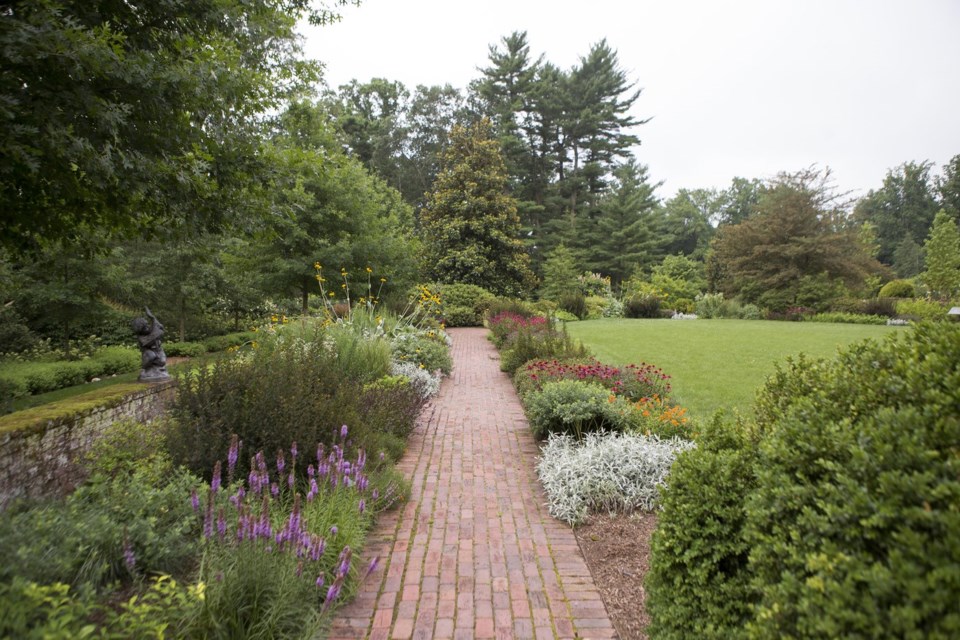For decades, native plants were relegated to the ΓÇ£weedΓÇ¥ section of many American gardeners' minds. Most nurseries didnΓÇÖt stock them. But thatΓÇÖs .
Native plants provide food and shelter for bees, butterflies, birds and other beneficial critters. They effortlessly grow healthier and stronger than exotic species, seldom need fertilizers or other amendments, and generally require little or no supplemental water once established. TheyΓÇÖve grown for hundreds or thousands of years just fine without us, evolving along with native insects, which recognize them as food.
So, why donΓÇÖt more people plant them?
IΓÇÖll tell you one reason why: Unless carefully selected, the plants in a native garden can get messy, a look that some people embrace but others do not. It's one thing if youΓÇÖre , but you might want things neater in a small urban garden or in a suburban community with a homeowners association.
But thatΓÇÖs on the gardener, not the plants, because itΓÇÖs absolutely possible to have a structured and beautiful native garden.
ΓÇÿPICK THE RIGHT PLANT FOR THE RIGHT PLACEΓÇÖ
This old mantra emphasizes the importance of considering sunlight exposure, water accessibility and when . Plant habit ΓÇö its shape and size ΓÇö also should be front of mind.
Familiarize yourself with the mature sizes of your fledgling plants when deciding where to place them. DonΓÇÖt, for instance, plant tall natives along a walkway, where they may grow to block access or flop over by mid-season, especially after rainfall.
Place taller plants and those more likely to lean at the back of a border, with shorter, tighter ones in front to help hold them in place and keep edges tidier. For beds that can be viewed from all sides, place the taller plants in the center.
Avoid planting one-offs. Planting clusters of the same species or color will make the garden appear cohesive.
CONTROLLING SPREAD
Because native plants arenΓÇÖt sterile, as many hybridized and exotic species have been bred to be, some spread readily by dropping seeds after they bloom. Others spread via underground runners, sending up new plants as they travel across the bed.
This a term used to describe aggressive exotic plants that spread to outcompete native species. In fact, itΓÇÖs a desirable trait when aiming to fill a meadow with native plants, just perhaps less so when attempting to appease your HOA.
The solution lies in research. Look for plants with ΓÇ£clumpingΓÇ¥ or ΓÇ£moundingΓÇ¥ habits that will stay put, and avoid those described as ΓÇ£runnersΓÇ¥ or ΓÇ£fast spreaders.ΓÇ¥
Asclepias tuberosa (butterfly weed), for instance, will not move or migrate. Its cousin, Asclepias syriaca (common milkweed), can be aggressive, weedy and difficult to remove. Both plants are caterpillars and considered beneficial to the ecosystem. But one might be better for your garden than the other.
If plants reseed where you donΓÇÖt want them, remove them and plant them elsewhere (free plants!) or trade them with a friend.
Dig up and divide plants every three years to prevent crowding. And if your natives threaten to become unruly, mow them down before they set seeds at the end of the season.
DonΓÇÖt simply scatter wildflower seeds and expect them not to grow wild. They will, which makes them perfect for a dedicated wildflower bed or a hilly slope but perhaps less than perfect elsewhere.
THE CARPET AROUND THEM
Consider native grasses, sedges, and clover as substitutes for common turf grasses, which rely on ground-polluting amendments, pollinator-killing pesticides and regular mowing while contributing little to the ecosystem.
If necessary, keep just to define the space (and appease your neighbors), and keep beds and borders neatly edged.
Include native shrubs in your design to retain structure year-round. Statues, arbors, benches and birdhouses also add visual interest.
___
Jessica Damiano writes regular gardening columns for the AP and publishes the award-winning . You can for weekly gardening tips and advice.
___
For more AP gardening stories, go to .
Jessica Damiano, The Associated Press



